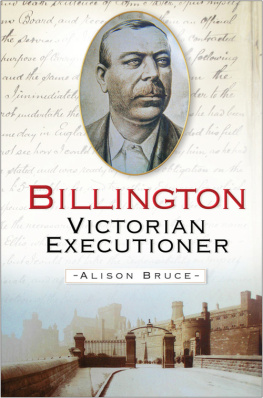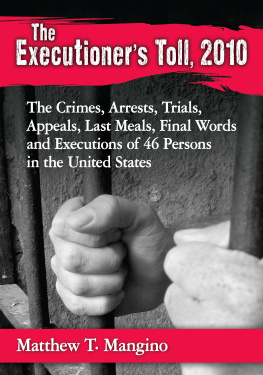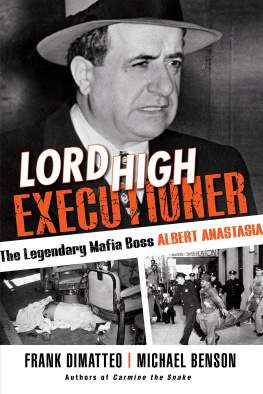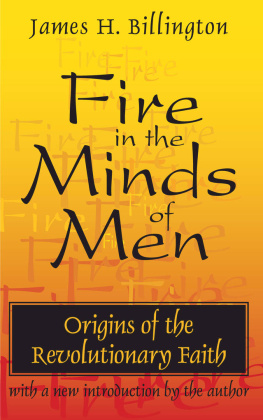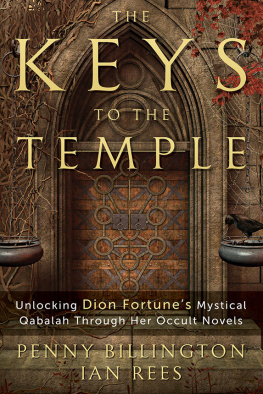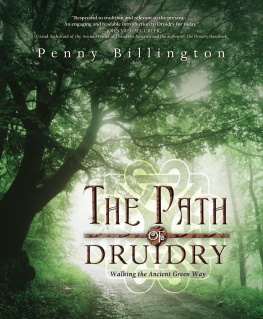
Dedicated to Manfred Louis Masset
24 April 1896 27 October 1899
I must start by saying a big thank you to Stewart P. Evans, who is always exceedingly generous with his time and expertise. And another big thank you to Matilda Richards and the staff at The History Press for turning my manuscript into such a beautiful book.
My appreciation also goes to a group of people who have all helped me at various stages and in a variety of ways (in alphabetical order): Phillip Atkinson, James Barton, Nick Connell, Glenda Eaves, Rosie Evans, Steve Fielding, Ralph Harrington, Kimberly Jackson, Jo Malton, Carol Noble, Nigel Preston, Richard Reynolds, Matthew Spicer and Laura Watson. And, as always, Natalie, Lana and Dean.
Finally, I wish to thank my inspirational agent, Broo Doherty, for her unwavering support, and Jacen for his steadfast commitment to my books.
In many official documents and newspaper reports there were variations in the spelling of names, for example Wyndham and Window. It has not been uncommon to find two or three different spellings of one name within the same document. Wherever possible I have taken the most official record of the spelling, for example a registration of birth, death or marriage over a newspaper report, or court record in preference to handwritten letters. Sometimes this has meant that I have chosen a spelling that varies from the spelling used in some other books and accounts, but in each case this has occurred after making a decision based on which spelling I feel is most likely to be correct. It is also worth bearing in mind that spelling of names varied within families, for example Whitham and Witham, which indicates how much more emphasis we put on the consistent spelling of names than in Victorian times.
C ONTENTS
One: |
Two: |
Three: |
Four: |
Five: |
Six: |
Seven: |
Eight: |
Nine: |
Ten: |
Eleven: |
Twelve: |
Thirteen: |
Fourteen: |
Fifteen: |
Sixteen: |
J ames Billington executed some of Britains most notorious killers including the serial killer Dr Cream, and Mrs Dyer, the baby farmer, but I quickly discovered that the little-known cases were equally macabre; like the man who attempted to boil away the body, and the woman who played loudly on the piano to conceal the murder taking place in the upstairs room. For me, this book was not just about the extreme personalities, but the people who were driven to commit their crimes, and, of course, the man whose choice of employment was one of the most disturbing imaginable.
The large number of criminals James Billington executed, 151 in total, meant that there was a great opportunity to look at cases that have not previously received much attention. The research generated a huge volume of information and as I worked through, the gripping story of the executioner and his career emerged.
After researching some of the cases, I chose not to concentrate only on the most famous examples. Gaining the best insight into the challenges Billington faced would only be possible by looking at a representative cross-section of the crimes and by picturing both the people he executed, and the families and communities that confronted him at each appointment.
In addition, there was at least one murder victim in connection with each of these executions, and I did not feel it right to automatically skip over any cases. Homing in on only the cases shrouded in mystery, notoriety or bizarre circumstance gives Victorian crime a kind of dark glamour and an air of fiction. In contrast, showing the long-forgotten killers and the desperate plight of their victims paints a more rounded picture, not only of crime at that time, but of Victorian society as a whole.
Capital punishment is also an emotive subject and it is far easier to justify the use of the death penalty in those extreme cases where the perpetrator can be described as evil, than when the criminal act is more the product of societys failings than of individual weakness.
Something that has always interested me about executioners is their motivation for applying to the post and the long-term impact this role has on their personal lives and psychological health.
Some of the biographical information has been drawn from family accounts and using rare copies of other executioners memoirs, making this a unique account of James Billington and his days as Englands number one hangman.
This has been a fascinating book to research and write, and I think that it provides a huge insight into the issues facing Victorian hangmen and the people who struggled to live in Briatin during this era.
From boiling cauldrons to tinkling pianos, it certainly dispells the myth that it was a more moral and law abiding age.
Alison Bruce, 2009
C HAPTER O NE

James Billington. (Authors collection)
J oseph Laycock was a hawker who had cut the throats of his wife and four children. He was held at Armley Gaol in Leeds and the date for his execution was set as 26 August 1884. In the minutes before he was hanged, Laycock spoke to the executioner and asked, You will not hurt me?
Possibly his question was more than just the usual final thoughts of any condemned prisoner, perhaps he was acutely aware that the man with the responsibility of ending his life was not only new to the post of hangman for Yorkshire, but also untested.
No, thaal nivver feel it, for thaal be out of existence i two minutes, Billington replied, and within moments the thirty-seven-year-old Lancastrian had proved that he was more than fit to hold the position.
Becoming a hangman certainly seemed to be a departure from Billingtons full-time job as a barber, but in truth he had only been appointed after showing an almost obsessive keenness for the post, a desire that had begun before he was old enough to work.
James Billingtons father was also called James. He was a Preston man who had married a Bolton girl named Mary Haslam. Initially they lived in her home town but after losing their first child, William, in 1841, they moved to Preston. James was to become the third eldest of their seven surviving children and after his birth they returned to Bolton.
In the 1851 census return, James Billington seniors profession was listed as labourer. However, his son had no plans to follow in his fathers footsteps; instead the eleven-year-old boy built a replica gallows in the familys backyard and imagined himself in the executioners role. He made dummies and practiced hanging them. He was still too young to have developed any sense of duty or strong beliefs in the use of capital punishment, yet he clearly felt a strong attraction to the only profession where an appointment with the incumbent would be an appointment with death.
Until 1874, the countrys principal executioner had been William Calcraft who had been over seventy years old when he had conducted his last execution, making Billington a comparatively young hand. During Calcrafts period in office he executed over 400 prisoners. He may have been James inspiration during his early years, but it was his successor, William Marwood, who set the standard that James Billington would need to match.
Next page
